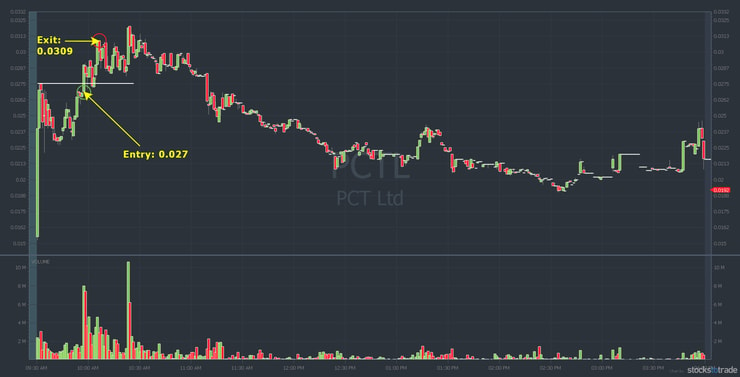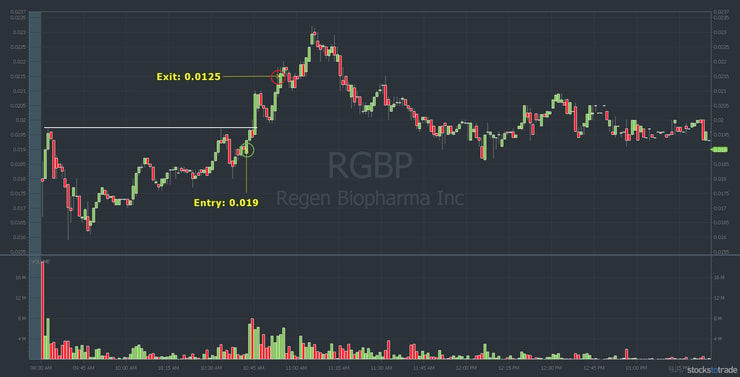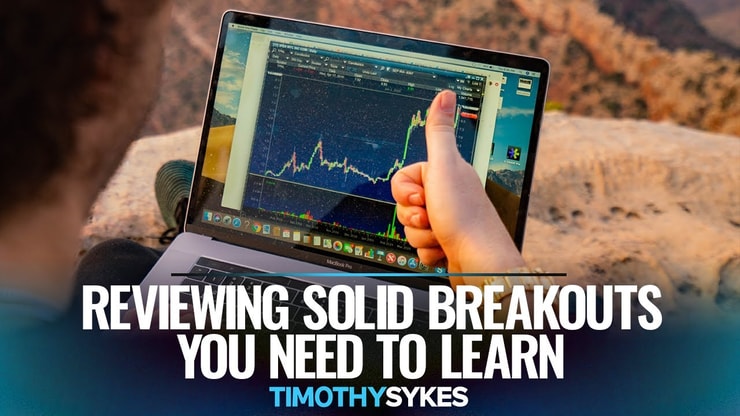Many readers have requested I bring back student Q&A.
Now that the market has slowed down a little, I can catch up on questions from aspiring day traders. You asked and I listened…
Starting now, “Questions From Students” is back.
Keep in mind, I give a Q&A webinar for my Trading Challenge students every other week. And I answer questions during live trading webinars as long as I’m not in the middle of a trade. (Or right when the market is about to open.)
So if you really want your questions answered, apply for the Trading Challenge today.
Let’s do this…
Table of Contents
Croatia and a New Laptop
It feels amazing to start giving travel updates again. This week I’m in Croatia working on a potential charity donation.* I’ll have more news about that in the coming weeks.
Also, last week I got a new laptop. My old laptop actually had keys falling off. I couldn’t even type a letter k without several attempts. So I’m happy to get a new one, but at the same time, it’s weird…
I’m sorry this might be the end of the bull market as I had to get a new laptop as the keys on my last one were falling off so this was overdue. Hopefully I’m just wrong in thinking my laptop is in any way connected to the market, but I’m superstitious as it was my lucky laptop! pic.twitter.com/HeIikyl6op
— Timothy Sykes (@timothysykes) May 4, 2021
I’m a little superstitious. So I avoided getting a new laptop in case my old one was tied to the bull market. Both the Dow and S&P 500 hit new highs on Friday, so hopefully, I’m just wrong.
Speaking of laptops, you don’t need a special trading laptop. But there are some basic requirements, so do your homework before you get a new one.
Re-Introducing the Karmagawa Blog
The Karmagawa team is growing and one thing we’re really focused on is sharing our story. Last year we created the Karmagawa blog. Please read it, bookmark it, and visit often. When you see a story that touches you, share it.
Every time you share, you help bring awareness to important causes. And it’s not all doom and gloom. There are some truly inspiring stories. Like this one about a crypto trader donating Dogecoin profits to pay dog adoption fees…
Good story on the all new @karmagawa blog all about a #dogecoin investor using their winnings to help rescue dogs: https://t.co/wO621i5In5 I LOVE HEARING ABOUT GOOD DEEDS LIKE THIS! #DogecoinRise
— Timothy Sykes (@timothysykes) May 5, 2021
Isn’t that cool? All the more reason to do what it takes to be the best trader you can be. Freedom isn’t just escaping the rat race, it’s having the means to give back to causes YOU care about.
Before we get to trading, I’m proud to announce…
Karmagawa’s 80th School
Karmagawa’s 80th school is now open! We named this one in honor of Trading Challenge student turned mentor, Kyle Williams.*
I’m proud to announce the opening of the 80th @karmagawa school in honor of one of my newest millionaire https://t.co/occ8wKmlgm students @traderkylec for passing $1 million in trading profits (he’s now over $1.7 million and growing nicely)! Who's next? How hard will you study? pic.twitter.com/tZ6Ff4oVJ0
— Timothy Sykes (@timothysykes) May 6, 2021
Congratulations, Kyle! We all look forward to visiting the new schools when travel restrictions are lifted. For now, it’s enough to see these children get the opportunity for an education. What we take for granted in the U.S. isn’t available to every child — but it should be.
And finally, it was my honor to surprise my mom for Mother’s Day with…
More Breaking News
- 3 Stocks I’m Watching in an Ugly Market
- Market Turbulence: Is American Airlines Facing Headwinds or Tailwinds?
- Is NVIDIA’s Stock Surge Sustainable After CES Announcements?
The Jo-Ann Sykes School
My mom is the best mom in the world. The Jo-Ann Sykes School is Karmagawa’s 81st and another in our ongoing partnership with Bali Children’s project.
Happy Mother’s Day to my mom, the best mom in the world and it’s my honor to surprise her with a school in her name, The Jo-Ann Sykes School! Even though I can’t be with her in person on this special day, I’m proud to announce the 81st @karmagawa school in her honor as she ROCKS! pic.twitter.com/H7UqL3DEvV
— Timothy Sykes (@timothysykes) May 9, 2021
Thank you for everything, mom!
Let’s talk trading…
Real Traders Adapt to Any Market Condition
This is SO important! Too many newbies who only started trading in the past six months have NO idea what it means.
Let me make it as straightforward as possible…
Those who make too much $ too fast actually learn the wrong lessons, which come back to bite them in the long run, which is why they usually lose most or all of it over time…fools and their money are soon parted. So prioritize being safe & grow your account in a responsible way
— Timothy Sykes (@timothysykes) May 6, 2021
Sometimes the market is hot like we saw in 2020. Not to mention January and February this year which were just insane.
Sometimes the market is a little slower, like right now. (See the first student question below for more about this ‘slow’ market.)
But sometimes there aren’t ANY solid setups. Sometimes the best trade is no trade at all.
Whatever the market conditions, you can’t expect to trade the exact same way every day. The market shifts whether you’re ready or not. So you MUST be ready to adapt. Only gunslingers come to the market every day thinking they don’t need to adapt. And they ALWAYS lose in the long run.
Are you ready? Let’s do this…
Trading Mentor: Questions From Students
The first question is all about perspective…
“Why is the market so slow all of a sudden?”
I’ve actually heard newbies say, “This must be the slowest market in history.” Anybody who says this is the slowest market in history is a fool. Anything they say … do the opposite and you’ll probably live a better life.
This is NOT the slowest market in history. That’s one of the dumbest comments I’ve ever heard.
Again… perspective matters.
People say it’s slow right now because their ‘normal’ is January and February. They don’t have the proper perspective. January and February were near max bubble market conditions. That’s unsustainable for very long.
A lot of people learned bad lessons in January and February because the market was so hot. If you keep trading like you traded in the bubble, you’re gonna lose everything.
So even though we’re coming off the hottest bubble in two decades, it’s not like there are no plays. Last week we saw plays like BPSR, GVSI, DSCR, and RGBP. Sometimes you had to be fast, but there were solid setups. You just have to learn to adapt and take what the market gives you.
Whether it’s a fast or slow market, your goal is to adapt and capitalize on the patterns. Perspective helps. Remember, don’t get greedy in a slower market. You have to be even more careful about risk management.
Next question…
“I see big percent gainers every day. How do I know which one to focus on?”
If you ever wonder what stock I’m gonna watch first, it’s the biggest recent percent gainer. And I focus on stocks that show they can bounce.
All things being equal, after that I look for volume and liquidity. Then I look for a news catalyst and consider the time of day. I go through all seven indicators in the Trader Checklist. For more details, I recommend watching the “Trader Checklist Part Deux” guide.
Next question…
“What happened to the small account challenge?”
Good question … and there are a couple of answers.
I don’t have the patience when the market is hot. When the market is slow, I might take a small trade. Then I can get into specifics. But when the market gets red hot, my attitude is “Let me make as much as I can because I’m donating it ALL to charity.”
Plus … I’m not trading huge. I take $10,000–$30,000 positions.* But at the same time, I don’t have the patience. The lesson is … know your limitations.
A small account challenge is useful. But it’s also annoying when there are so many plays every day like we’ve seen recently.
Final question for this edition of the update…
“When buying a HOD breakout, how do you know when to buy?”
I like high-of-day breakouts but I don’t like buying right at the high. I prefer to buy a little below the day high. Why? Because sometimes there’s a wall of sellers at the high. If you buy it right there, you condemn yourself to buying the potential top.
Then you have to watch and wait. If it hits a wall of sellers at the previous high of day, does it take them out? Then, once it does break the high of day, there are a lot of people with scanners that alert high of day. So they get alerted.
Note: StocksToTrade has a built-in High Low Ticker scan.** (Yes, I’m a proud investor in StocksToTrade. Use it, it’s designed specifically for low-priced and highly volatile stocks.)
So when the alerts come, everyone’s like, “Oh, high-of-day breakout.” So you’re looking for a runner, but you have to see how it reacts. Also, how much is it up on the day when it breaks out?
And once it does break out, can it hold? If it pulls back, does it hold a key level? And if it runs into a wall of sellers, can it take them out? Check out my “Learn Level 2” guide to learn how to recognize a wall of sellers.
The trade review below is an example of a HOD breakout trade. But first, watch this video…
How to Anticipate and Buy Penny Stock Breakouts
Now let’s review a recent trade…
Trade Review
This trade is from April 30 during my all-day Trading Mastery webinar. It’s a good example of what I think about when trading breakouts.
PCT Ltd (OTCPK: PCTL)
PCTL spiked big after an update about oilfield testing for one of its products.
Even though PCTL isn’t an oil company, it’s like an oil play because the news was about oil well testing. I don’t like commodity plays, but it had news. And it had the right price action. So I went with it as a speculative trade.
First, check out the chart from April 30 showing my buy and sell…

As you can see, the morning spike was fast. I don’t like to chase, so I waited to see if it would pull back and consolidate. When it was testing the day’s high, I bought it. Again, I didn’t wait for the exact high.
Once I was in the trade and it broke the previous high, I was patient. Buying just below the breakout gave me wiggle room. Had I bought right at the previous high of the day, I might not have been patient on the pullback.
Look at the line drawn on the chart at the breakout level. It pulled back and even dipped below the breakout, but I was never down. There were three keys to this trade…
3 Things to Watch on a High-of-Day Breakout
First, can it hold the initial breakout? That’s important to me. If it doesn’t hold, small gain or small loss, it’s a failed breakout.
Second, can it take out the newly created high of day? In this case, it was $0.0294.
Finally, can it get past a wall of sellers at a round number? With PCTL, $0.03 was a round number and there was a big wall of sellers.
It did all three. For me, it was a solid trade — I’m not always that patient.
It might’ve been my best trade of the week. At $3,422 it wasn’t huge in terms of profits.*** But I had a thesis and a plan. And I gave it time to play out. 14.44% is fine on a speculative play — singles add up.***
To really drive this home, let’s look at one more trade. Last Friday I had another HOD breakout trade that was very similar…
Regen BioPharma, Inc (OTCPK: RGBP)
RGBP is a former runner getting a lot of attention from Twitter pumpers. After nearly two weeks of long kiss goodnight action, it spiked on May 7.
Here’s the RGBP intraday chart with my entry and exit. Notice the similarity between this trade and the PCTL setup…

Again, I didn’t buy right at the previous high of day. Instead, I bought it before it reached the day’s high. That gave me wiggle room if it turned into a fakeout breakout.
And the same three keys applied to this trade. After it broke out, could it hold? Then, could it keep going? And finally, could it get past sellers at the next round number? This time the round number was the same as the new high of day at $0.021.
Like the PCTL trade, this wasn’t a huge win.*** But it’s a great example of how I like to approach entries on HOD breakouts.
Read “The Complete Penny Stock Course” for more on breakouts. (Hint: see page 150.)
Millionaire Mentor Market Wrap
That’s another one in the books. There are a couple of key lessons this week…
First, adapt to market conditions. Real traders adapt. They know it’s damn near impossible to stay in the game if they get stubborn or trade like a gunslinger.
Finally, keep things in perspective. If you’re new to trading, you got spoiled by the last 12 months. Take a deep breath, refocus on the process, and work to develop skills for life.
The most success will come over time. Now go study.
Disclaimers
*Tim’s primary income derives from the sale of financial education products and subscription services offered by various businesses and websites in which he has an ownership stake.
**Tim Sykes owns a minority stake in StocksToTrade.Com.
***Please note that these kinds of trading results are not typical and do not reflect the experience of the majority of individuals using our products. From January 1, 2020, to December 31, 2020, typical users of the products and services offered by this website reported earning, on average, an estimated $49.91 in profit. This figure is taken from tracking user accounts on Profit.ly, a trading community platform. It takes years of dedication, hard work, and discipline to learn how to trade. Individual results will vary. Trading is inherently risky. Before making any trades, remember to do your due diligence and never risk more than you can afford to lose.
If you get it, comment below with “I will adapt to market conditions.” Comment below, I love to hear from all my readers!





Leave a reply